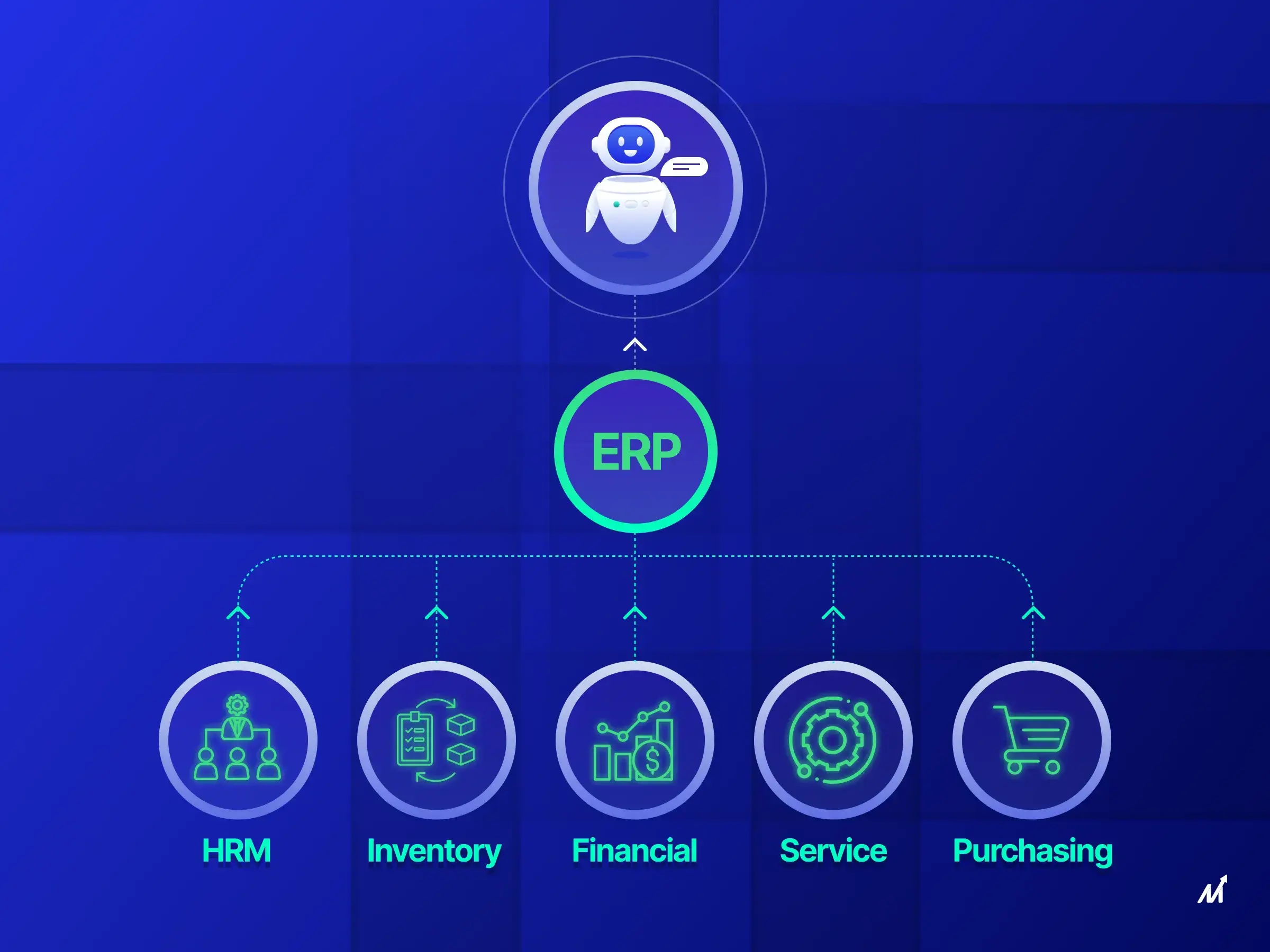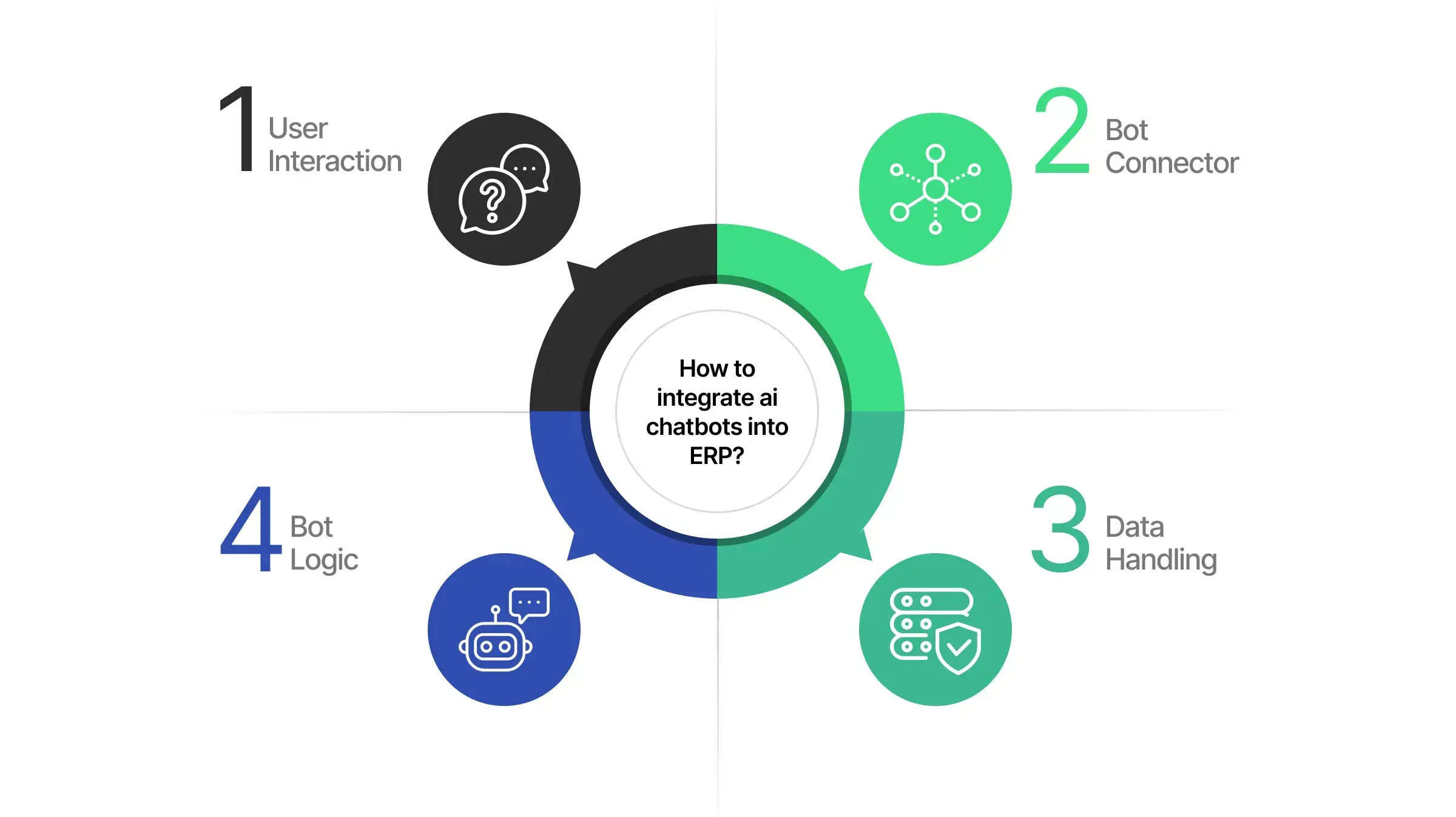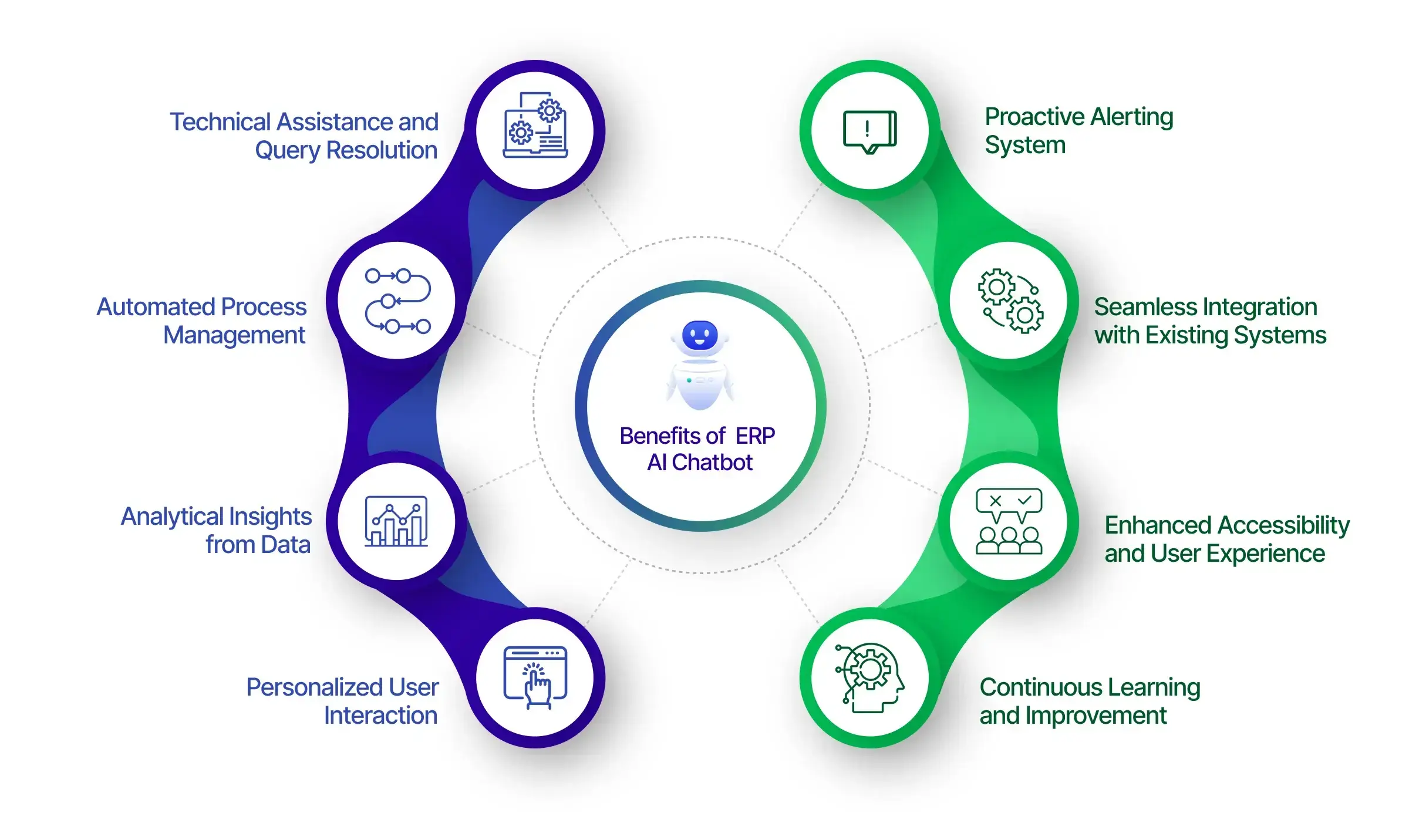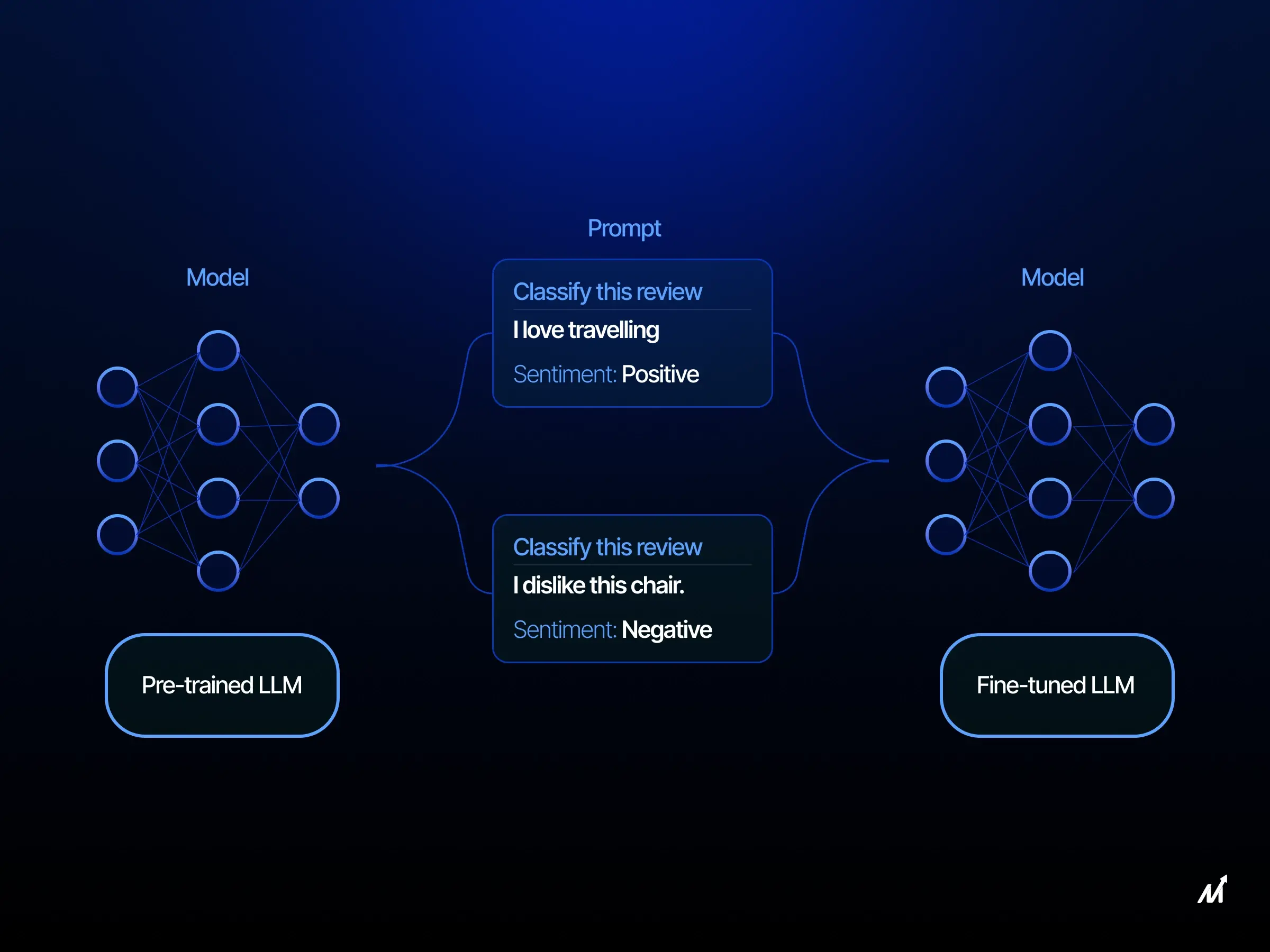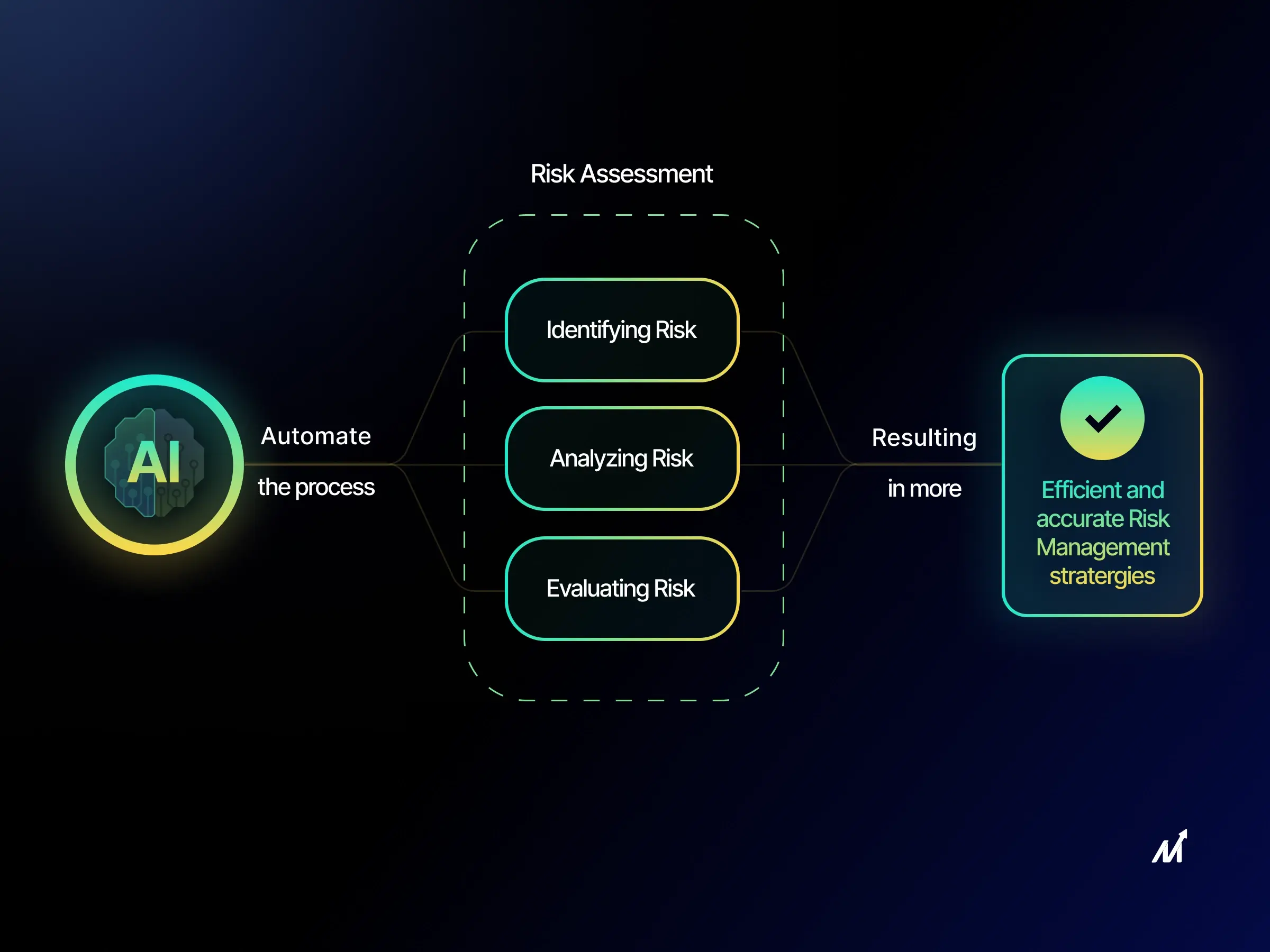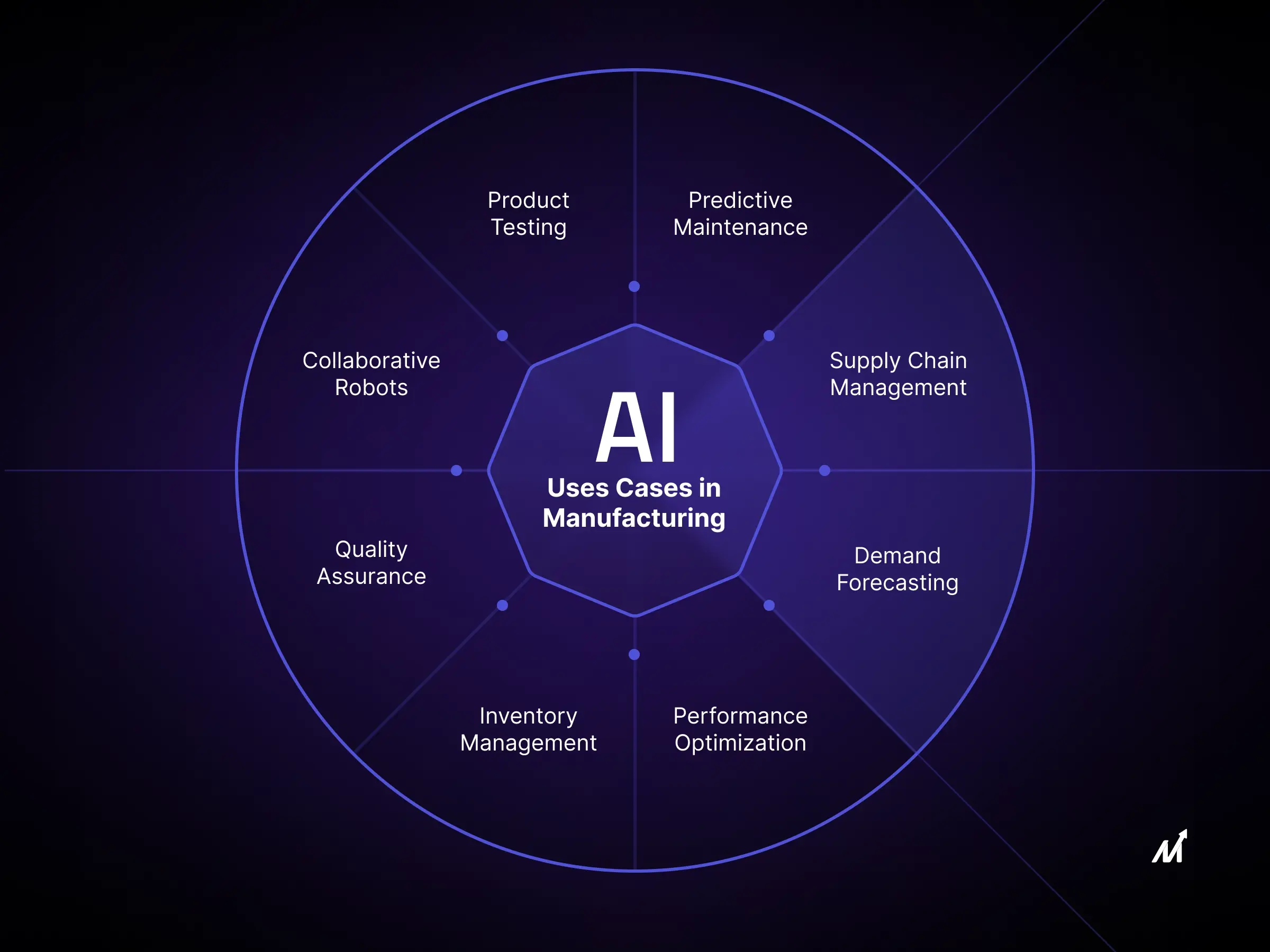Introduction: AI Chatbots for ERP
Businesses are increasingly turning to AI chatbots for streamlining interactions with complex ERP systems and their associated applications. This move is gaining momentum for its potential to enhance user experience for both customers and employees.
PwC’s U.S. SAP practice leader, Rich Sernyak, predicts that chatbot interfaces will become standard across enterprise applications. This integration represents a significant step in applying generative AI to existing workflows. Chatbots simplify how users interact with application data, but Sernyak advises using vendor-neutral chatbot platforms for greater flexibility and value, especially when dealing with data and workflows that span multiple applications.
Advancements in machine learning and generative AI, particularly large language models (LLMs), are making chatbot development easier, especially for ERP systems. Some companies might customize these AI and chatbot platforms to fit their specific workflows better. Many top ERP platforms are already incorporating chatbot capabilities.
These tools range from traditional chatbots to newer digital assistants that align with existing application UIs. Enterprises must choose the type of interface that offers the most value and ease of use for their customers and employees.
It’s important to note, however, that these AI tools aren’t perfect. The LLMs behind advanced chatbots can sometimes produce incorrect information. This is especially risky in scenarios involving safety information, where wrong advice could be dangerous. Companies using chatbots need to implement thorough quality assurance and safety checks to counteract these potential errors.
How to integrate AI chatbots into ERP?
In business operations, integrating AI chatbots into ERP systems enhances efficiency and security. Here’s a simplified breakdown:
- User Interaction: Starts with a user query on platforms like Webchat or Slack.
- Bot Connector: Hosted in the cloud, it relays this query to the bot logic.
- Bot Logic: Located on the company’s network for security, it processes the query. Depending on the need, it either pulls information from the backend system or uses a cloud-based NLP engine to understand the query.
- Data Handling: The bot logic compiles necessary information, ensuring sensitive data is encrypted and secure within the company’s network.
This setup ensures quick user interactions while maintaining data integrity and security, crucial for businesses and enterprises.
Prerequisites to integrate AI chatbots into ERP
Integrating chatbots into ERP systems hinges on the quality of the data they use. If the data is poor, incomplete, or misaligned, chatbots won’t perform well. They might even produce misleading results. For a chatbot to be effective, it needs accurate and well-organized data.
To tackle this, businesses must first clean up their existing data. This step often uncovers problems in how data is generated, altered, and checked for accuracy. After cleaning the data, it’s crucial to ensure consistency among different data sources. In traditional ERP systems, aligning data with a central enterprise schema was enough. But chatbots and large language models (LLMs) can analyze unstructured data, like procurement documents or safety manuals, in addition to structured data in the ERP.
This ability to handle both structured and unstructured data calls for a method to synchronize these different types of information. Once the data reaches a satisfactory level of accuracy, integrating chatbot functions into the ERP system becomes smoother. This integration can be achieved using pre-built connectors, specialized tools, ERP-tailored chatbot templates, conversational apps, or through partner marketplaces. This process ensures that chatbots in ERP systems are not only functional but also effective and reliable.
Benefits of ERP AI Chatbot
Enterprise Resource Planning (ERP) systems stand as a crucial backbone for businesses. The integration of AI chatbots within these systems marks a significant leap forward, offering a suite of benefits that transform how businesses interact with their data and processes. Let’s get into the practical merits of AI chatbots in ERP systems, emphasizing their role in enhancing business efficiency and decision-making.
Technical Assistance and Query Resolution
AI chatbots in ERP systems are adept at handling a range of queries. This function is not merely about answering frequently asked questions; it’s an advanced, interactive guide. For instance, when an employee queries about a financial report or a project status, the chatbot doesn’t just locate the file – it analyzes the content, offering summaries or highlighting key figures. This capability is rooted in natural language processing (NLP) and machine learning algorithms, which enable the chatbot to understand and respond to queries in a human-like manner.
Automated Process Management
One of the most impactful roles of AI chatbots in ERP is in automating routine tasks. These include data entry, generating standard reports, and managing basic workflow approvals. By programming the chatbot to handle these tasks, businesses can reduce manual effort and the associated risk of human error. The technical basis for this lies in the chatbot’s ability to interact with different database modules of the ERP system, pulling and updating information as needed.
Analytical Insights from Data
AI chatbots are equipped with machine learning capabilities that enable them to analyze large sets of data within the ERP system. They can identify patterns, trends, and anomalies. For example, a chatbot can analyze sales data over several quarters to predict future trends, or it could examine inventory levels and supplier performance to suggest optimizations in the supply chain. These insights are crucial for strategic planning and informed decision-making.
Personalized User Interaction
Personalization is a key strength of AI chatbots. They learn from each interaction and tailor their responses based on user role, past queries, and preferences. This means that the chatbot can provide more relevant information and assistance to each user. For a marketing executive, the chatbot might focus on delivering insights related to campaign performance and customer engagement metrics, while for a finance manager, it could prioritize cost-related queries and budget reports.
Proactive Alerting System
AI chatbots in ERP systems can be configured to proactively alert users about critical issues or updates. For instance, they can monitor thresholds for inventory levels, sending alerts when stock is low. They can also flag discrepancies in financial data or notify relevant personnel about urgent workflow approvals. This proactive approach ensures that potential issues are addressed promptly, preventing minor problems from escalating into major ones.
Seamless Integration with Existing Systems
An important aspect of AI chatbots in ERP is their ability to integrate seamlessly with existing systems and workflows. They are designed to complement and enhance the ERP software, not to overhaul it. This integration involves linking the chatbot with various ERP modules (like finance, human resources, supply chain management) and external data sources, ensuring a unified and efficient operation.
Enhanced Accessibility and User Experience
AI chatbots improve the overall user experience of ERP systems. They offer an intuitive, conversational interface that makes navigating complex ERP software more straightforward. Users can interact with the system through simple, natural language, making it easier for employees across different levels of technical expertise to engage with the ERP system effectively.
Continuous Learning and Improvement
Lastly, the AI in these chatbots is not static; it’s designed to learn and improve over time. Through continuous interaction with users and data, the chatbot fine-tunes its responses and recommendations, becoming more accurate and useful. This aspect of machine learning ensures that the chatbot evolves with the business, adapting to changing needs and scenarios.
Steps for Building a High-Performance ERP AI Chatbot
1. Objective Setting
The initial step involves defining a clear and precise objective for the ERP AI chatbot. This includes identifying specific tasks the chatbot will perform, such as automating processes, providing data, or offering user assistance within the ERP system. The clarity of this objective is crucial as it guides the subsequent stages of AI chatbot integration, ensuring that the chatbot serves a meaningful purpose within the ERP framework.
2. AI Platform Selection
Choosing the right AI platform is critical. The decision revolves around selecting a technology stack and AI algorithms that seamlessly integrate with the existing ERP infrastructure. Options include established platforms like Dialogflow or Microsoft Bot Framework, or custom solutions using Python with libraries such as NLTK or spaCy. The selection is based on compatibility with the ERP system, the complexity of tasks the chatbot will handle, and scalability requirements.
3. Conversational Flow Design
Constructing the chatbot’s conversational capabilities involves detailed work. It starts with identifying common user inquiries that the chatbot needs to address. From there, designing responses and conversation paths that are coherent and contextually appropriate is essential. This stage also involves integrating Natural Language Understanding (NLU) components, enabling the chatbot to interpret user intent and context accurately. Additionally, the chatbot is tailored to recognize and respond using industry-specific terminology, enhancing its effectiveness in specialized ERP environments.
4. Deployment and Monitoring
After developing the chatbot, it’s integrated into the ERP system. Post-integration, continuous monitoring of the chatbot’s interactions with users is vital. This process involves collecting data on its performance, analyzing this data to identify areas for improvement, and making iterative adjustments to refine the chatbot’s responses and functionality. This ongoing refinement ensures that the chatbot remains effective and relevant to users’ evolving needs.
Through these steps, businesses can develop an ERP AI chatbot that is not only technically sound but also highly functional and user-friendly. This approach has led to the successful implementation of numerous ERP solutions, demonstrating the effectiveness of a well-structured and methodically executed development strategy.
Integrating AI Chatbots in Your ERP with Markovate
At Markovate, we specialize in designing and integrating state-of-the-art AI chatbots into your existing ERP systems. Our approach is tailored to ensure that your business leverages the full potential of AI technology.
- Customized Chatbot Development: Understanding that each business has unique needs, we focus on developing customized AI chatbots. Our team works closely with you to understand your specific requirements, ensuring the chatbot aligns perfectly with your ERP system’s workflows and industry-specific language.
- Advanced AI Integration: Our expertise in AI technology allows us to integrate advanced features into your chatbot. This includes natural language processing for understanding user queries accurately, machine learning algorithms for improving response quality over time, and seamless integration with your ERP database for real-time data access and responses.
- User Experience Optimization: We prioritize user experience, ensuring that the chatbot interface is intuitive and user-friendly. This facilitates easier adoption among your employees, maximizing the efficiency gains from the chatbot integration.
- Continuous Support and Evolution: Post-integration, Markovate offers continuous support and updates. As AI technology evolves, we ensure your chatbot remains at the forefront, incorporating the latest advancements for improved performance.
- Data Security and Compliance: Recognizing the importance of data security, especially in ERP systems, our solutions are designed with robust security protocols. We ensure compliance with all relevant data protection regulations, safeguarding your business information.
Start building your ERP AI Chatbot with Markovate.
FAQs about ERP AI Chatbots
1. What role does an AI chatbot play in an ERP system?
An AI chatbot in ERP systems acts as a digital assistant, providing real-time responses to employee queries through understanding and processing language using AI and NLP.
2. What benefits do AI chatbots bring to ERP systems?
AI chatbots enhance ERP systems by improving efficiency, accelerating query resolution, offering personalized user interactions, and assisting in data-driven decision-making.
3. How do AI chatbots understand and respond to queries in an ERP context?
AI chatbots use machine learning and natural language processing to interpret the context of user queries and generate accurate, relevant responses within the ERP system.
4. Are AI chatbots in ERP systems customizable to specific business needs?
Yes, AI chatbots in ERP systems are customizable to meet unique business requirements, adapting to different workflows and industry-specific terminologies.

